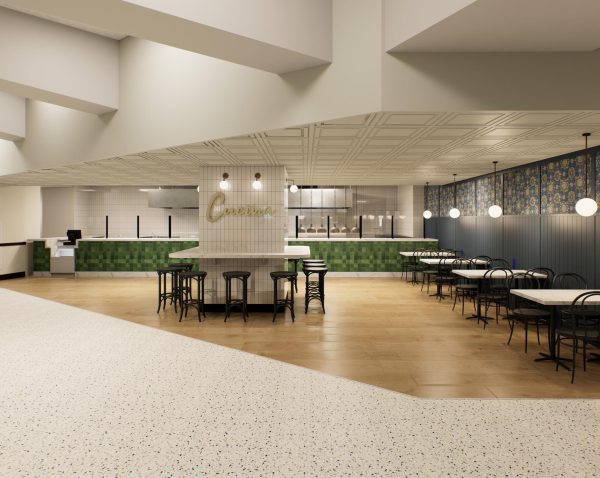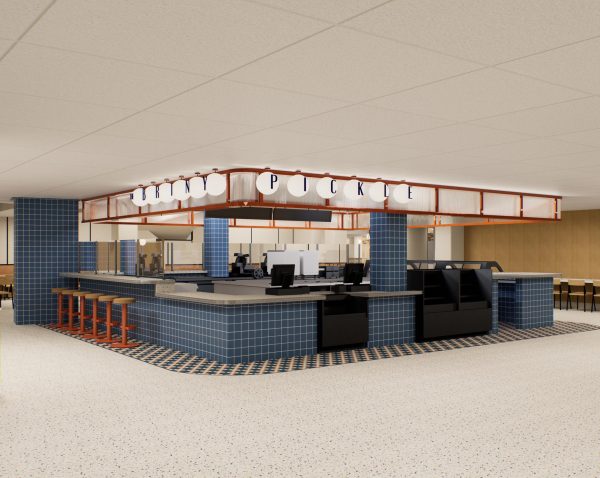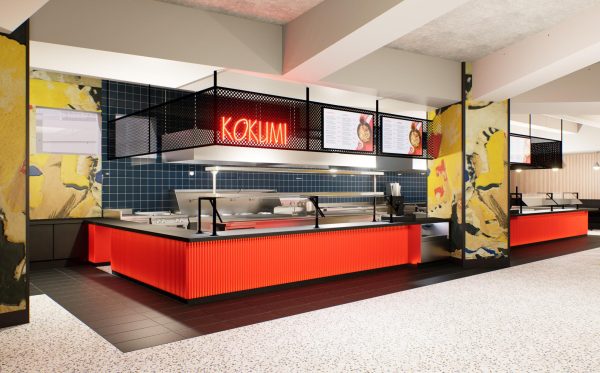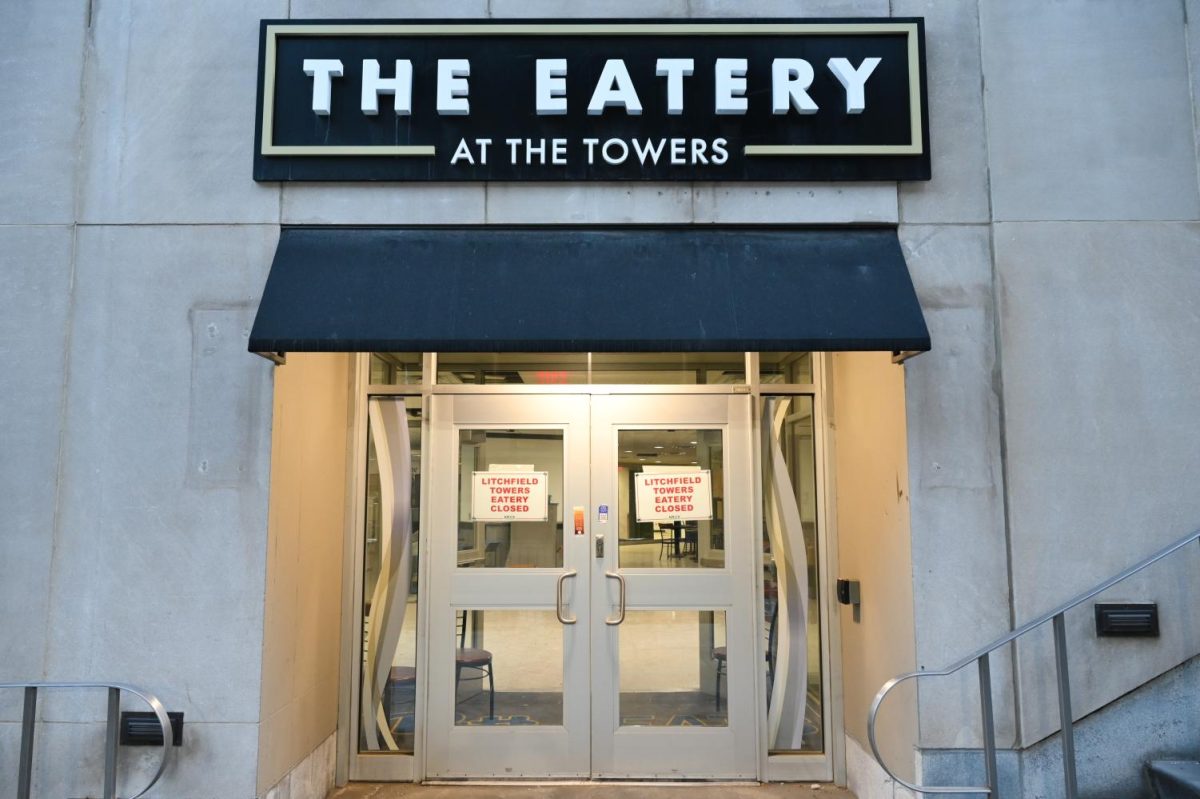The Eatery — the largest dining facility at Pitt — is currently undergoing a comprehensive transformation to change the dining experience for students.
Quintin Eason, the vice president of operations of Chartwells, said Pitt Eats’ goal is for the Eatery to be long-lasting and more efficient.
“It hasn’t been renovated since 2007, and this is a 48,000 square foot dining facility,” he said. “Our goal is to create more efficient equipment with sustainability goals in mind that falls under one pillar — can we build it for the future?”
Eason said they also plan to create a more unique and innovative space.
“Right now, it’s outdated — with this renovation, we have leapfrogged 5-10 years in innovation in new concepts that you wouldn’t see in the real world market if you go out to restaurants,” he said. “This experience is going to be future forward and food forward.”
The new model for The Eatery will change the style of food service, deviating from the buffet-style to self-serve model.
“In our future modeling concept, we have elements of themes with each space feeling like you are captured in a free standing restaurant,” Eason said. “This is going to be a Chipotle-style concept where we prepare food to order for you.”

(Nick Pagano/Pitt Eats Directory of Marketing and the communication lead on The Eatery renovation project)
Eason described the new layout in “niches,” which took the effort of “culinary talent from campus and visionaries to take into account the food demands of the incoming class and future generations.”
One of the locations is known as Table 33, which represents 33 different states in Latin America. “This is not just Mexican food, but food from Argentina, Brazil, Uruguay, and authentic crafted cuisines, like fresh made tortillas, churrascarias, agua frescas, etc.” Eason says.
Kakumi, another station, will include authentic food from across Asian cultures, such as kimchi, fried rice and scratch-made ramen noodles as well as Pho soup and bowls.
“Freshmen want comfort food, a really hard-to-find palate for students, but some really want homestyled crafted meals, and with population changing we wanted to make sure students coming internationally also feel at home” he says.
The Eatery plans to also accommodate students with dietary restrictions, such as allergies, vegan, vegetarian or faith-based restrictions like halal or kosher.
“We have a dedicated allergy station which removes common allergens milk, egg, soy, wheat, tree nuts, shellfish, sesame but we are also veg-forward in every station — if you’re a vegetarian, you’ll be able to eat off of every station every single day,” Eason said. “In addition, all beef is halal beef and locally sourced along with a dedicated kosher area”
Despite the changes, The Eatery will remain open from 7 a.m. to 12 a.m., with the possible addition of late night hours.
“This will be based on student feedback to have certain locations open,” Eason said. “We don’t have to keep all spaces open, and this is economical.”

(Nick Pagano/Pitt Eats Directory of Marketing and the communication lead on The Eatery renovation project)
Some students have displayed enthusiasm for the updates. Although many upperclassmen do not have a meal plan or only have a more limited meal plan, some are considering checking out the new Eatery.
“I lived on the upper campus the past school year, so I didn’t make it to the Eatery that often,” Sophia Pollex, a sophomore nursing major, said. “With that being said, the times I did eat there, it was either a hit or miss, like a typical college dining hall. So I’m excited to see the new renovations being made and I plan to check it out.”
Mariska Goswami, a sophomore computational biology major that will not have a meal plan next year, said she is still planning to try out the Eatery’s changes.
“Whenever I ate at the Eatery, I noticed how constantly busy it was, which I think made it hard to get quality food sometimes” Goswami said. “But other times I enjoyed eating there in between or after classes or studying at Hillman. I’m curious to see changes to the interior design and the food being offered.”
The Eatery is going through a phased construction. Not every location will be completely done until the 2024-2025 academic year, but students will see the first changes around move-in week in late August.
“Currently we are ahead of schedule, but we hope to have the first phase ready right when students move in or shortly after they move in,” Eason said. “There will be no interruption of service and students can get access to any meals they need.”




